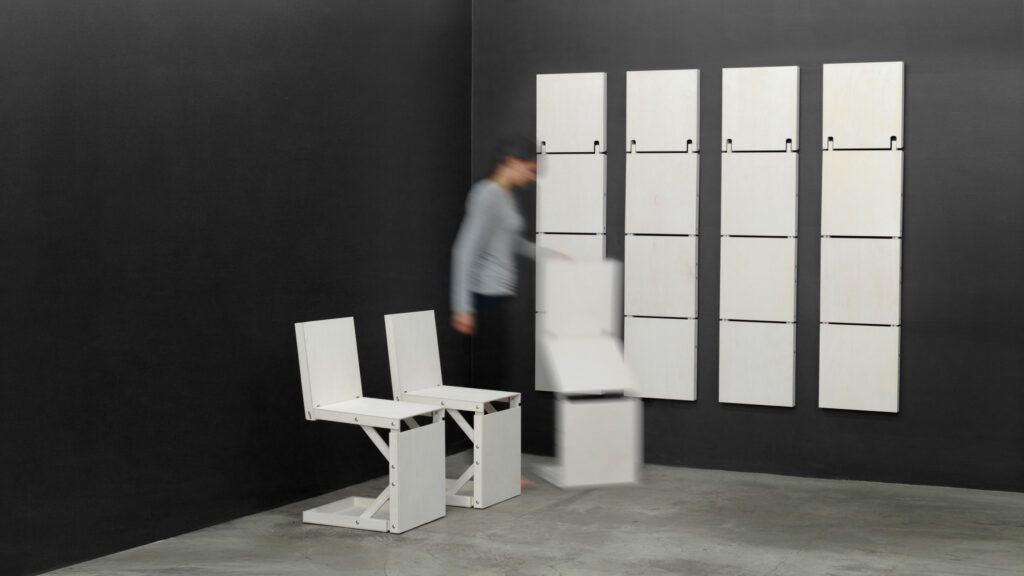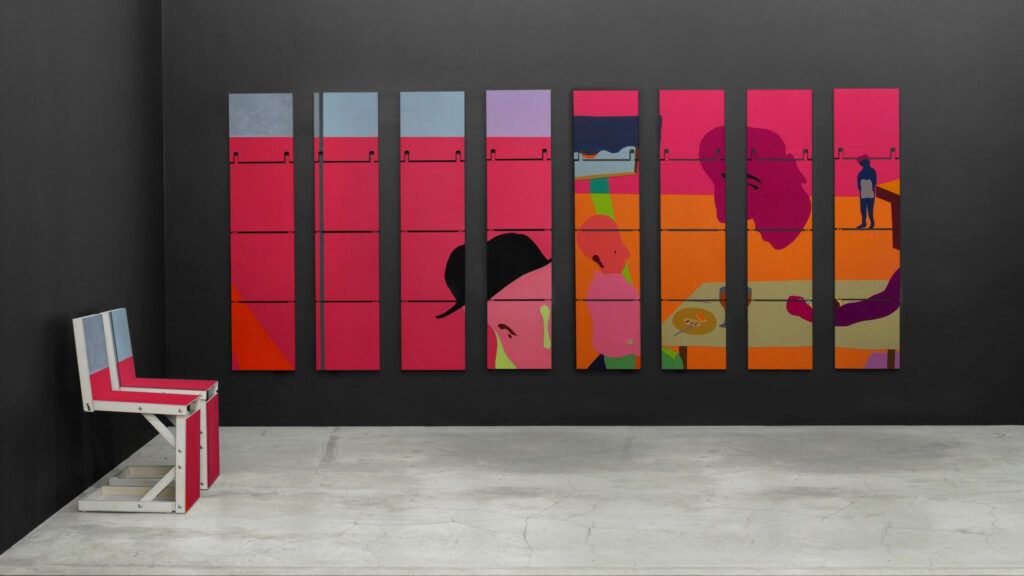Wall Hanging Folds Up into Space-Saving Chair

They look decorative hanging on a wall, like abstract oriental art of some forgotten kind. But looks can be deceiving. These innocent-looking wall hangings double as stylish, simple and sleek space-saving seats for any occasion.

This removes the need to store the chairs when they are not in use – they can be hung in plain sight – and makes for an interesting conversation when you take them off the wall to offer them to guests. It makes you wonder what other pieces of furniture you could design to fold up and hang on the wall.
More info on the Pick Chair from the designer, Dror Benshetrit,:
“I began my graduation project at the Design Academy Eindhoven by examining the characteristics of a common folding chair. Typically the spartan, unsightly seat is hidden away somewhere, only to be pulled out when company arrives. Why do we invite guests to sit on a piece of furniture we’re not proud of? What’s more, if we don’t have room to accommodate extra seating, we probably don’t have much storage space, either.”

“The opposite of an object you’re not proud of is one that you’re supremely delighted by, as with art. My solution for improving the standard seat plays with this duality; I saw an opportunity to make a chair that functioned as both a work of art and a place to sit. Its physical transformation needed to be seamless—otherwise, the conversion would unfold in a mechanical step-by-step process and detract from the allure of change.”

“The Pick Chair is a canvas with movable joints, where its flat surfaces double as a place for art. Its hinged metal framework comprises four panels, the top of which features a small hole. The chair can therefore be hung on a wall when not in use, and morphs into a seat with a single gesture: simply set it on the ground and its hinges pivot to form a sturdy base, seat, and back. What’s striking about the Pick Chair is its smooth transition from the 3D (an object) to 2D (an artwork). It stands at the intersection of these dimensions, and paved the way for the recurring theme of physical transformation in our studio’s work today.”




